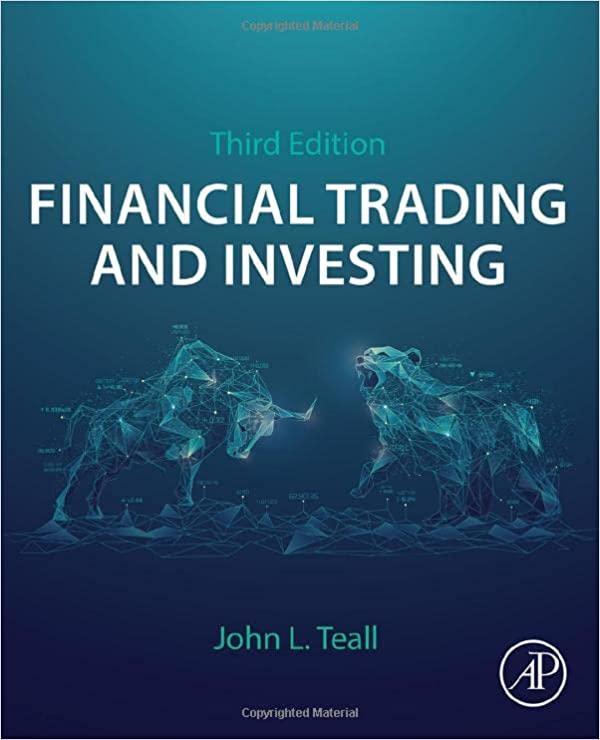Question
Consider a sequential trade market like in Glosten and Milgrom (1985). The asset valueVcan take only two values,0and1, with equal probability0.5. In the market, half
Consider a sequential trade market like in Glosten and Milgrom (1985). The asset valueVcan take only two values,0and1, with equal probability0.5. In the market, half of the traders are informed and half are noise. Noise traders buy or sell with equal probability (and never decide not to trade). Informed traders receive a symmetric binary signal with precisionq= 0.8(i.e.,Pr(st= 1|V= 1) = Pr(st= 0|V= 0) = 0.8) and maximize expected profits.
a. Find the bid price that the market maker will set at time1.
b. Suppose in the first two trading times there are two sell orders. Will the ask at time3be higher, lower or equal to the bid at time2? And how will it compare to the ask at time1?
c. Suppose informed traders are risk averse rather than risk neutral. How do the bid and ask prices at time1compare to those computed under risk neutrality? You do not need to provide a numerical answer but a careful explanation.
d. Suppose traders could buy or sell any quantity of the asset at each timet. What quantity would traders buy or sell if the market maker posted the same bid and ask prices you found in point a? How would you change the model to allow for trades of different size?
Step by Step Solution
There are 3 Steps involved in it
Step: 1
Analyzing a Sequential Trade Market with Risky Traders a Bid Price at Time 1 Informed Traders When signal s1expected profit from buying 1b1 b 1bb When signal s0expected profit from selling b10 b bb Se...
Get Instant Access to Expert-Tailored Solutions
See step-by-step solutions with expert insights and AI powered tools for academic success
Step: 2

Step: 3

Ace Your Homework with AI
Get the answers you need in no time with our AI-driven, step-by-step assistance
Get Started


